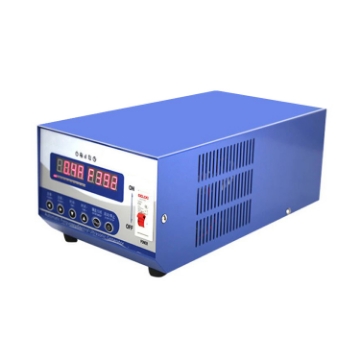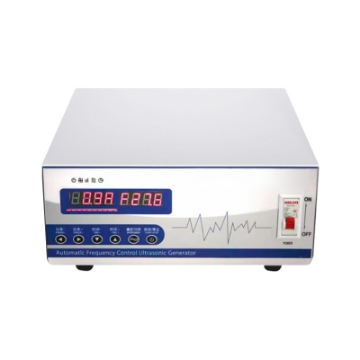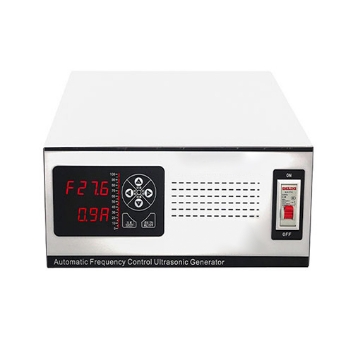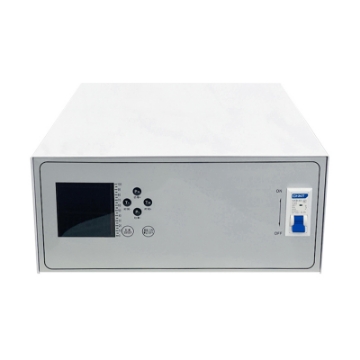Ultrasonic Generators
Ultrasonic Generator 20kHz
SISCO-UG-THDT2
The SISCO ultrasonic generator is a device that converts electrical energy into high-frequency ultrasonic waves. It generates vibrations at a specific frequency, like 20kHz, which are transmitted through a medium to achieve the desired effect. The generator controls these ultrasonic waves' frequency, power, and duration, making it an essential component in the ultrasonic system.
$384.92
Ultrasound Generator 25/28kHz
SISCO-UG-THDT1
The SISCO ultrasound generator is designed for 25kHz and 28kHz frequencies, ideal for industrial and laboratory use. It uses advanced digital signal processing to precisely control frequency and power output, ensuring stable ultrasonic energy. The modular design allows easy integration into existing systems and ensures durability for continuous operation.
$338.77
Ultrasonic Generator 40kHz
SISCO-UG-THDT6
The SISCO ultrasonic generator operating at 40 kHz is a device that produces high-frequency electrical signals, which are then converted into ultrasonic sound waves by a transducer. It is commonly used in applications such as cleaning, welding, and medical imaging.
$338.77
Ultrasonic Frequency Generator 68/80/100/128kHz
SISCO-UFG-THDT5
The SISCO ultrasonic frequency generator is available in 68/80/100/128 kHz options. An ultrasonic frequency generator transforms electrical energy into high-frequency ultrasonic waves, commonly used for cleaning, welding, and medical imaging applications.
$501.85
An ultrasonic generator, also known as an ultrasonic power supply, is a device that generates high-frequency electrical energy, typically in the ultrasonic range (above 20 kHz). This electrical energy is then converted into mechanical vibrations using a transducer. These vibrations are used in various applications, such as ultrasonic cleaning, welding, medical imaging, and sonochemistry.
Key Components of Ultrasonic Generator
- Oscillator: Creates a high-frequency signal that determines the ultrasonic frequency.
- Amplifier: Increases the power of the signal generated by the oscillator.
- Transformer: Matches the impedance between the generator and the transducer, optimizing power transfer.
- Control Unit: Manages frequency, power level, and other operating parameters to ensure consistent performance.
Working Principle of Ultrasonic Generator
- The working principle of an ultrasonic generator involves generating a high-frequency alternating current (AC) signal, which drives the transducer. The generator contains an oscillator circuit that produces a stable frequency signal. This signal is then amplified to a suitable power level to drive the ultrasonic transducer.
- The ultrasonic transducer, usually made of piezoelectric material, vibrates at the frequency of the electrical signal, creating ultrasonic waves. These waves are transmitted into a medium (like liquid, gas, or solid) and can be used for various applications, including cleaning, welding, cutting, and medical imaging.
- In summary, the ultrasonic generator converts electrical energy into high-frequency mechanical vibrations, which can then be harnessed for different industrial and scientific purposes.
Applications of Ultrasonic Generators
- Ultrasonic Cleaning: Removes dirt, grease, and other contaminants from surfaces in a liquid medium.
- Ultrasonic Welding: Joins materials, especially plastics, using ultrasonic vibrations.
- Medical Ultrasonography: Creates images of internal body structures using sound waves.
- Sonochemistry: Enhances chemical reactions through ultrasonic agitation.
Advantages of Ultrasonic Generator
- High Precision: Enables precise cleaning, cutting, or imaging with minimal damage to materials.
- Efficiency: Requires less time and energy compared to traditional methods.
- Versatility: Can be adapted for various applications by changing the frequency, power, and waveform.
- Environmentally Friendly: Often reduces the need for chemical solvents in cleaning processes.





